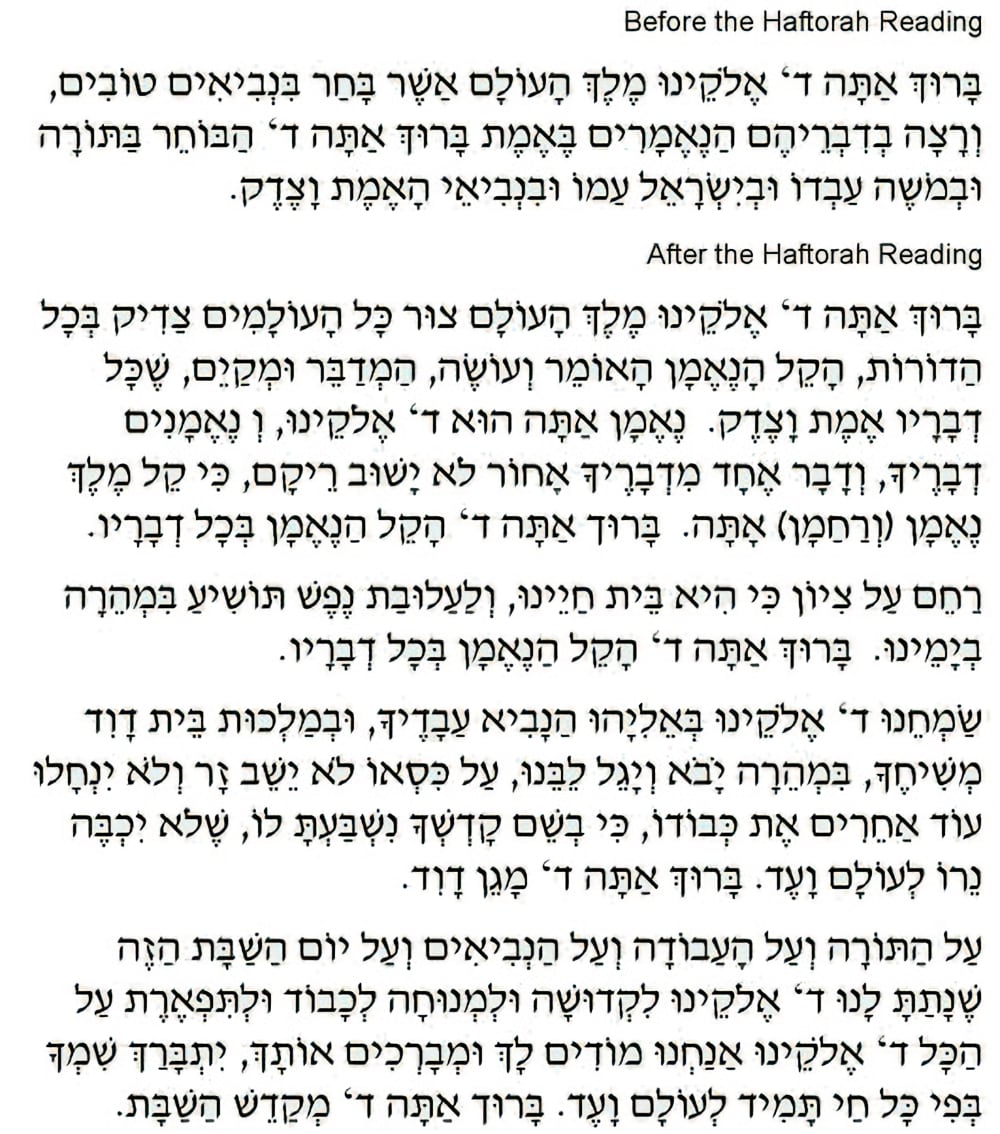The Haftarah
"The Departure - Taking Leave"
The term "Haftarah", which in Hebrew means "The Departure",
refers to the readings from the Books of the Prophets (Nevi'im) in the Hebrew Bible.
These readings are separate from, and follow,
the Torah readings every Shabbat, Festivals and on Fast Days.
In the majority of congregations, the Haftarah is chanted by
the last person called to the Torah, who is known as the Maftir.
The term Maftir refers to the congregant who is "taking leave" of the Torah reading,
and who will continue with the Haftarah reading.
These are the prayers which the congregant recites BEFORE and AFTER the Haftarah reading:

WHAT HAPPENS WHEN THE MAFTIR IS CALLED UP
The Maftir congregant recites the blessings
before and after the last verses of the just concluded Torah reading.
Once the Torah scroll has been raised ("Hagba") for the congregation to see, and the scroll has been dressed "Gelilah"),
the Maftir begins to recite the opening blessing which precedes the Haftarah reading.
Unlike the Torah reading which has to be recited from a Torah scroll which has no vowels or punctuation, the Haftarah is read from any collection of the Prophets.
It is marked with vowels, punctuation and cantillation to enable the Maftir to chant the Haftarah according to the congregation's accepted style (Nusach).
At the end of the Haftarah reading, the Maftir closes with the four blessings that conclude that part of the service.
The Hebrew Bible (Tanach) consists of three main sections:
- Torah (The Five Books of Moses)
- Nevi'im (The Prophets)
- Ketuvim (The Writings)
Note:
Traditionally, a BarMitzvah celebrant is given the honour of
being the Maftir and chanting the Haftarah.
In Conservative and Reform congregations a BatMitzvah celebrant receives the same honour).
Note:
As the Ashkenazi pronunciation for Haftarah is "Haftoroh" , this can lead to confusion with the word "Torah".
But in Hebrew the two words are unrelated. (Torah is spelt with a "taf" and Haftarah is spelt with a "tet")



















